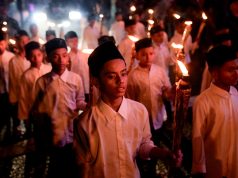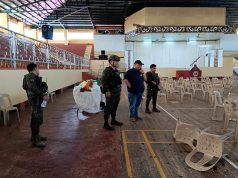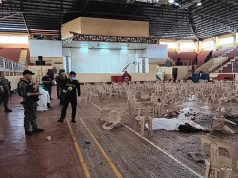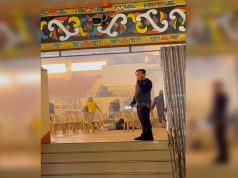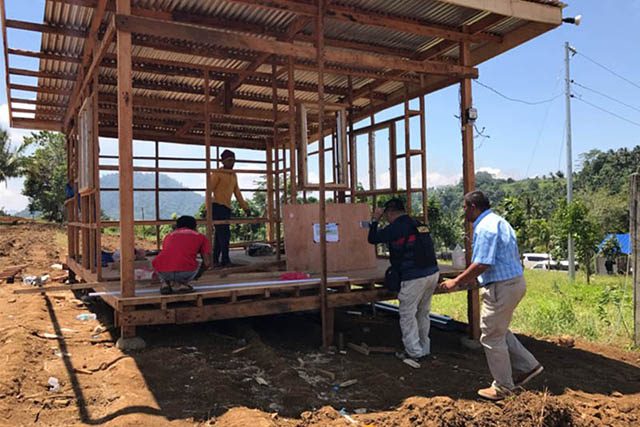
MANILA (Thomson Reuters Foundation) — When Tong Pacasum was allowed back into the area where his family home once stood in Marawi on the Philippine island of Mindanao, there was nothing left for him to salvage months after a bloody siege that leveled much of the city.
But Pacasum considers himself lucky: his family is safe, and they have a title to their property, which will be key as residents and authorities begin rebuilding after the country’s biggest and fiercest urban battle in years.
Others among the 200,000 Maranaos — as residents of Marawi are known — are not as fortunate.
When pro-Islamic State rebels laid siege to the city in May 2017, everyone fled. Residents including Pacasum were allowed to inspect their homes and retrieve their belongings only recently.
Groundbreaking — when demolitions of all affected structures will begin — is scheduled for July, after a private developer is selected.
The process will take several months, after which construction of roads and other public facilities will begin.
The government will then give funds to residents to construct their homes. Rebuilding Marawi could cost more than $1 billion and will be complete by the end of 2021, officials estimate.
But the process could be delayed by questions on land ownership, said Pacasum, who helped evacuate people during the siege, and now liaises with the provincial government on rehabilitation.
“It’s going to be a huge challenge, as a lot of residents don’t have titles to their properties, even though they have been living there for generations,” he said.
“If we don’t do it right, it will cause more pain and suffering, and we have already suffered so much,” said Pacasum, who has participated in consultations with other residents and officials on the plans for rebuilding.
Make or break
Muslims, as well as indigenous people, have been caught in the middle of a five-decade-old insurgency in Mindanao, exacerbated by loggers and mining companies eager to tap its rich resources including gold, copper and nickel, experts say.
President Rodrigo Duterte has called the island a “flashpoint for trouble” and atrocities by Islamist and communist rebels. Martial law imposed in May 2017 is in place until the end of the year.
Conflict over land was one of the major triggers of violence in Mindanao even before the siege and could be a “make or break” issue in the rehabilitation of Marawi, according to a recent report by development organization The Asia Foundation.
Failure to address land issues could stoke further conflict and push more people into extremism, the report said.
A solution may lie in a more participatory effort led by the community, said Ica Fernandez, a spatial planner and co-author of the report, who is part of an initiative called Open Marawi, which had made recommendations based on community feedback.
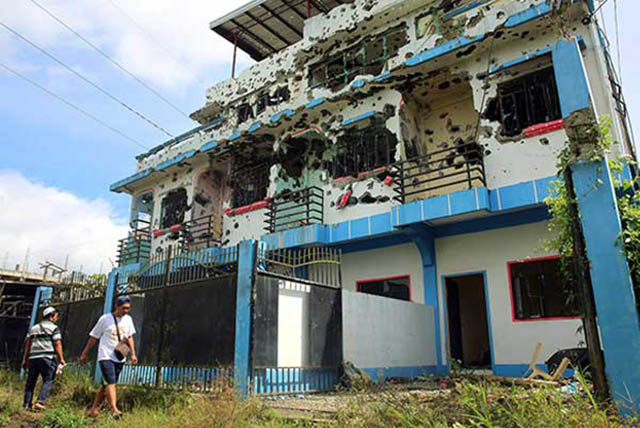
“A community-led effort is essential because of the history of Mindanao as an autonomous Muslim region,” said Fernandez.
“The people have the right to self-determination, the right to decide on their future. Especially in this case, when we have to also rely on memories and emotional associations to reimagine the city, we need everyone to be involved,” she said.
There is a complex system of ownership, tenure, and use of land in Marawi and in Mindanao, including practices that pre-date the Philippine nation-state.
A community-led rehabilitation is particularly relevant, as “many pre-colonial, traditional, and informal governance structures and practices around land, housing, and property” are practiced alongside laws, according to The Asia Foundation.
The government has established a Land Dispute Arbitration Committee to address concerns, and officials have said in the absence of a title, residents may present tax receipts and certificates from municipal officials.
“We will ensure all issues on land ownership are resolved,” said Adoracion Navarro, an official at Marawi’s regional development office.
The rehabilitation will “take into account the demographic composition of a predominantly Muslim population, the Marano culture, and existing capacities of communities,” he said.
Social tenure
More than 900 militants, 165 troops and police, and about 45 civilians were killed in the Marawi siege.
The siege forced more than 300,000 people from their homes in the once picturesque lakeside town. Some were housed in transitional housing built by the government, while others doubled up with relatives, or simply lived in tent cities.
Open Marawi has brought residents, officials and planners together to draw a blueprint for the city, Fernandez said.
Residents want better facilities, but have rejected plans for strict commercial and residential zoning — with businesses on the ground floor and residences on the upper floors — which are contrary to the traditional mixed-use structures, she said.
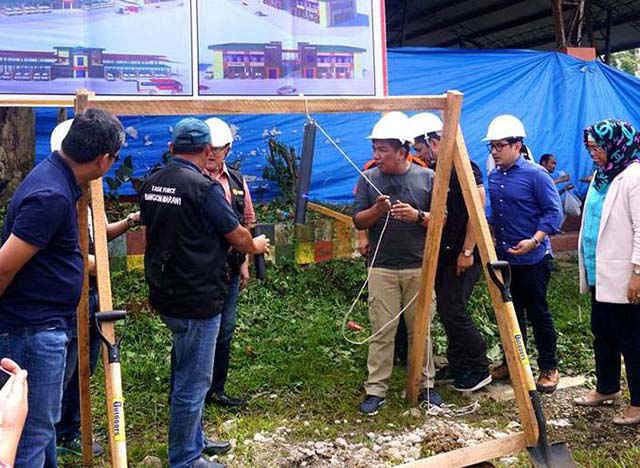
Importantly, Marawi’s informal land market and multiple titling systems make it imperative to determine occupancy before the debris is cleared, she said.
“We have to work at block, street and parcel level to establish occupancy rather than ownership,” she said.
“We need a social tenure assessment rather than a purely legal one because there are physical, cultural, political – and security factors,” she told the Thomson Reuters Foundation.
Fernandez and other experts are pushing officials to start demolitions only after documenting occupancy and ownership of land and property, as residents otherwise risk losing walls and pillars that may be the only markers of their properties.
Pacasum, who is eager to start rebuilding his home, is hopeful that the community will lead the development of a better Marawi.
As most mosques in the only designated Islamic City in the mainly Catholic Philipines were damaged by heavy machine gun fire, he converted what was left of his home into a makeshift mosque for the holy month of Ramadan.
Neighbors donated carpets and fixed lights and fans.
“Everyone is having a hard time, as everyone has to start rebuilding homes and livelihoods,” he said.
“But the fact that we could come together to do this is a sign that we can, as a community, do anything.” — Reporting by Rina Chandran; Editing by Astrid Zweynert




